The Solution
A presentation of t0 by Supernomial, a generative interface that equips transfer pricing knowledge workers with access, agency, and ownership, offering unparalleled customization and seamless AI integration.
With the development of t0, Supernomial is actively working toward enabling a thriving economy for transfer pricing knowledge workers, defined by access, agency, and ownership.
t0 is an interface designed for knowledge workers to create agentic applications—or simply, agents—that generate compliance, planning, and operational transfer pricing deliverables. The interface offers extensive customization options using conventional controls, such as input fields, selectors, and buttons, familiar from traditional software. However, it goes beyond traditional software interfaces by integrating generative artificial intelligence (AI) as a core functionality rather than an afterthought. t0 is fundamentally built around how AI interacts with users, processes data, and delivers outputs, making it a purpose-built solution for modern transfer pricing needs. For these reasons, we refer to it as a generative interface.
Beyond that, the solution offers several unique functionalities not found elsewhere in the market. These include full control over the content and style of report generation, the ability to define any calculation logic, and the flexibility to design solution workflows and their elements, among others. The true value of t0 lies in its customizability and the integration of all essential building blocks needed to launch an agentic solution within a single platform.
At Supernomial, our mission is guided by the question: What does the ideal knowledge work economy for transfer pricing experts look like, and how can we build towards it? Every new product feature is designed to reinforce our commitment to this mission. In the following sections, we outline our product design, its workflows and features, and our overarching approach to development.
How t0 unlocks access
Price
Most vendors adopt value-based pricing strategies, targeting a niche group of buyers with the budget—or perception—that a higher price tag reflects the value the software delivers. This has created a prevailing belief among buyers that transfer pricing software must be expensive. In contrast, t0 employs a consumption-based pricing strategy, designed to appeal to the average buyer who is more price-conscious.
Affordable pricing is also critical for multinationals to allocate a greater share of their tax budgets toward value-adding consulting work. We believe that the monthly cost of a comprehensive solution—capable of managing a broad range of deliverables from start to finish—should be in the hundreds of USD, not the thousands. This pricing model enables organizations to redirect budgets and resources toward policy work, operational improvements, and other strategic priorities. In our view, less than 10% of the value generated from a transfer pricing engagement should be spent on technology.
Usability
t0 is designed with a strong focus on user-centered interaction. Its functionality and design elements are carefully selected to ensure a direct, efficient, and accessible experience—while enabling knowledge workers to work with both precision and style. Our goal is to empower users to perform their tasks with confidence and sophistication.
Quick start and convenient trials
Sign up and log in using single sign-on with your organization’s credentials or a personal email and password and experience the full potential of the solution with a dedicated trial period.
Flexible organization management
Create or join organizations and seamlessly switch between them. For example, professional services firms can manage solutions for multiple clients under their own organizational profile while also joining their clients’ profiles to collaborate on solutions initiated by the clients themselves. Users also have access to a personal workspace, allowing them to experiment with new approaches and solutions without disrupting or overloading shared work environments.
Streamlined client management
As a professional services firm, you can create client profiles and flexibly add custom attributes to track relevant information across your clients. For example, you might track the relationship partner assigned to the client, the date the client joined your portfolio, the industry they belong to, or any other details important to your practice. You can define as many attributes as needed and customize their properties, enabling more meaningful analytics and insights later on.
Client workspaces are automatically created as soon as a client is added to your portfolio.
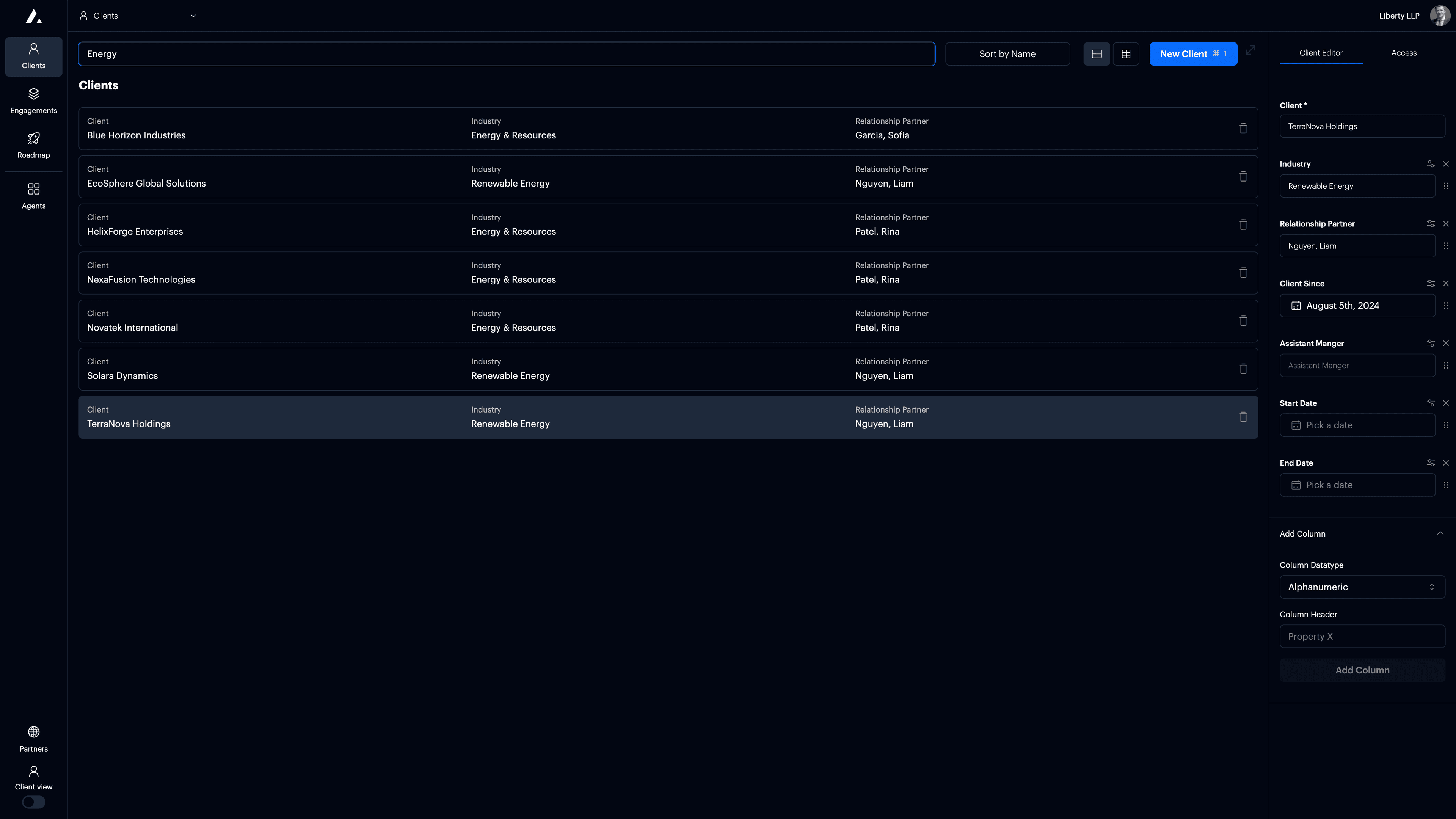
Figure 1: The Client Management interface – Alpha Version of t0
Effective engagement and work stream management
Professional services firms and in-house teams can create engagements and, if necessary, assign work streams within an engagement for more granular control over deliverables, including access and editing rights. Users can also define custom attributes to track key information about engagements and work streams, such as engagement type, work stream start and end dates, key contacts, location, status, and contractual details. You can extend the number of attributes and customize their properties, enabling deeper analytics and more meaningful insights.
Engagement- and work stream-specific workspaces, nested under the client or group, are automatically created when engagements and work streams are added.
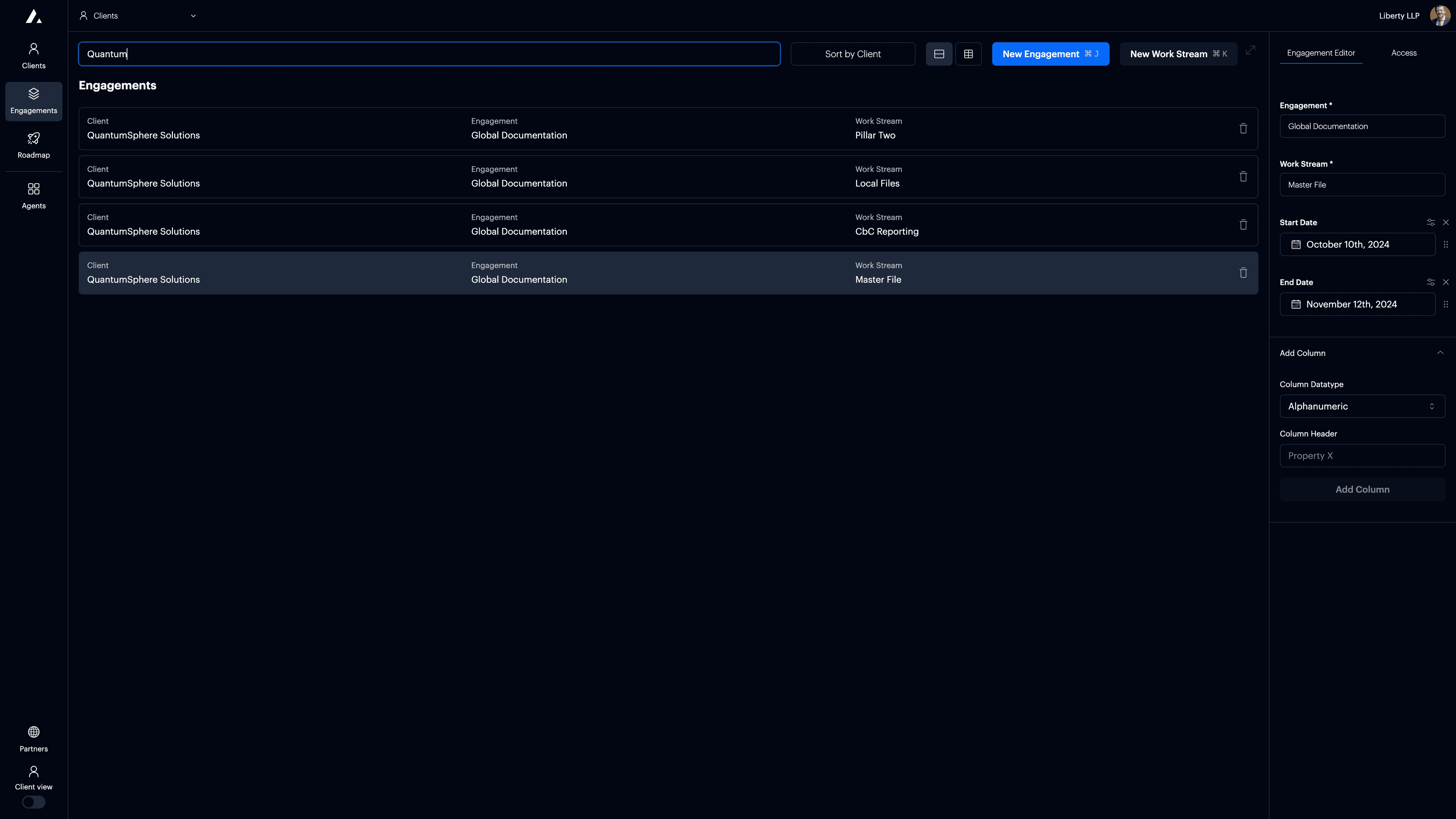
Figure 2: The Engagement Management interface – Alpha Version of t0
Intuitive and adaptive navigation
The top navigation bar displays clients/groups, engagements, and work streams ensuring they remain visible at all times while working with t0. This allows users to quickly identify their current workspace and navigate effortlessly between workspaces.
Visual project management
Create visual roadmaps based on your client/group, engagement, and work stream portfolio. Additionally, add activities to the roadmap to track progress, milestones, dependencies, and deliverables for a more comprehensive and actionable overview.
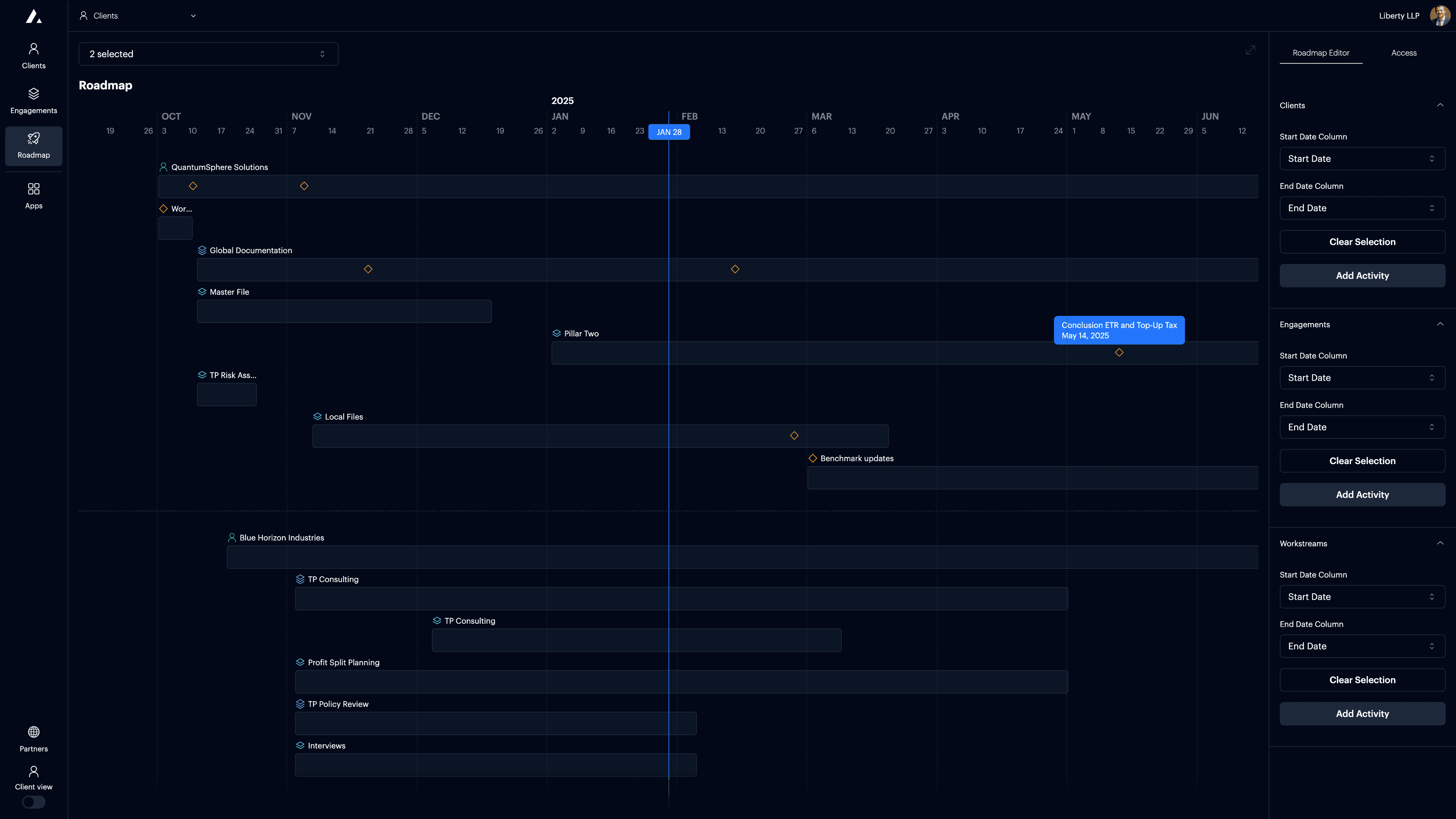
Figure 3: The Roadmap interface – Alpha Version of t0
Centralized agent management
Manage all solutions for compliance, planning, and operational deliverables—your agents—through the agent management interface. All agents you create, add, or are invited to are displayed for the workspace selected in the top navigation menu.
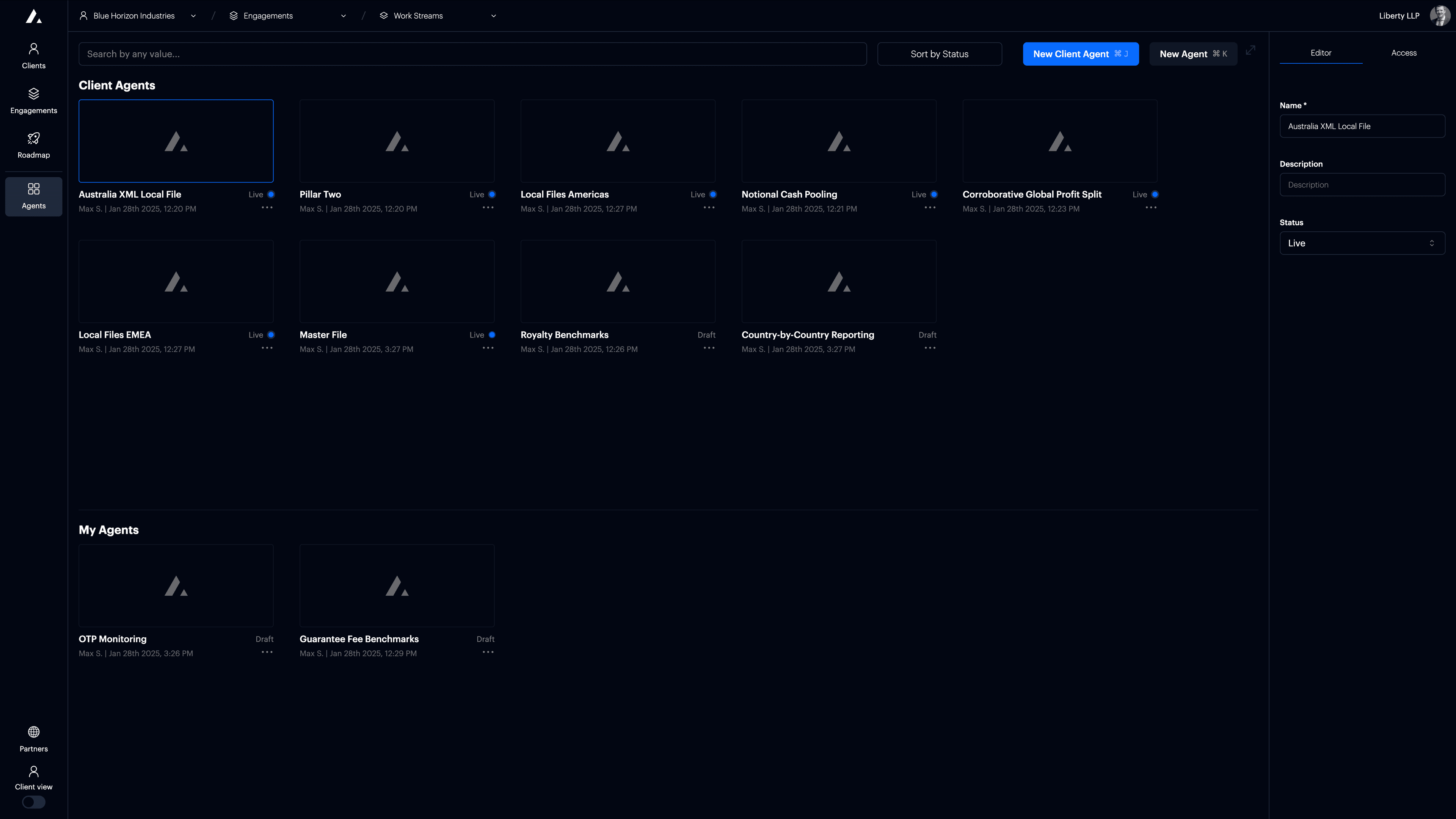
Figure 4: The Agent Management interface – Alpha Version of t0
AI integration
t0 provides multiple options for interacting with generative AI across different parts of the solution, either through a conversational, chat-like interface embedded within the platform, or via a split-panel (split-screen) interface. Users can choose from various AI models and define the context for interactions—such as tables, text saved as components, and more.
Additional features include the ability to engage in back-and-forth (multi-turn) conversations, edit the rules underlying the AI models generating results, and save elements such as prompts, logic, or results. This level of control empowers users to determine the degree of freedom the agent has when using AI models (see section on programmatic, deterministic, or probabilistic implementation of AI below).
Inclusive accessibility features
From the start, any design for t0 prioritizes inclusivity, ensuring seamless interaction for users with diverse abilities. Features include keyboard navigation, high-contrast themes, scalable text, and compatibility with assistive technologies like screen readers. By adhering to accessibility standards and incorporating user feedback, t0 aims at providing a software that empowers everyone in the transfer pricing domain.
Purposeful design
t0’s design goes beyond surface-level features like light and dark mode. Every element is thoughtfully crafted to balance functionality and simplicity, ensuring users are presented with the right type and amount of information without feeling overwhelmed. By focusing on clarity and intentional design choices, t0 enables knowledge workers to stay focused and navigate complex workflows with ease.
Real-time collaboration and interaction
By leveraging a real-time database, t0 auto saves your work, except in situations where deliberate confirmation is advantageous. A smooth and fast user experience is maintained with an interface that feels instant while updates are processed in the background. This enables knowledge workers to collaborate seamlessly, with updates reflected immediately for all users. In transfer pricing workflows, this capability proves especially valuable during the information collection stage, where multiple stakeholders contribute data, and the review stage of deliverables, facilitating efficient and streamlined teamwork.
Refined user management
Users can be invited to an organization and granted access to clients, engagements, and work streams. Advisor- and client-specific roles with varying permissions can be assigned, defining who can build, edit, view, or sign off on agent outputs.
Instant Consultant-to-Client View Transition
Knowledge workers can seamlessly switch between a full-access view, where they control all functionalities and the building process, and a limited-access view, simulating what clients or in-house colleagues with restricted editing rights would see. This ensures knowledge workers maintain full control over how their work outputs appear from another user’s perspective.
Support
Supernomial is committed to ensuring that users of t0 have the resources and assistance they need to succeed. From extensive self-help resources to personalized guidance, the support ecosystem is designed to empower knowledge workers and streamline their workflows.
Detailed documentation
Users have access to comprehensive documentation that clearly explains workflows, functionalities, and best practices for effectively utilizing the solution. It also provides detailed guidance on migrating to or from t0, ensuring a seamless transition without disruption.
t0 leverages open-source technologies for data transformations, visualizations, and report typesetting, and allows users to access and edit the underlying code for work outputs generated. Users have therefore the option to leverage any external available large language model to generate or modify code to configure agents, should internal models be insufficient or not preferred. This stands in stark contrast to closed systems that restrict code editing or require vendor intervention, giving t0 a significant advantage in terms of user autonomy and adaptability.
Success line
For complex challenges where documentation alone may not suffice, t0’s Success Line offers hands-on support tailored to professional services firms and in-house teams. The Success Line focuses on understanding the knowledge worker’s unique problem and delivering an optimal solution, ensuring the goal is met efficiently and effectively.
Support from partners
In-house teams also benefit from access to Supernomial’s network of professional services firm partners. This partnership network is particularly advantageous for teams seeking advisory services on transfer pricing topics beyond solution functionality. Whether addressing strategic questions or specific technical issues, this collaboration offers a holistic approach to achieving compliance and operational excellence.
Trust
Trust is the foundation of t0’s design, built to ensure security, transparency, reliability, and ethical practices that meet the needs of knowledge workers and organizations. By integrating trust into every aspect—from robust security measures to ethical AI practices—t0 provides a dependable and responsible platform tailored to empower users in their work.
Security and privacy
t0's security framework is designed to ensure robust security and privacy protection, aligning with industry best practices and global regulations such as GDPR and CCPA. We enforce strict access controls, encryption standards, and resilient data governance policies to maintain the highest level of security.
Access Control & Least Privilege - Access is strictly governed by the Principle of Least Privilege (PoLP), ensuring that only authorized personnel with a legitimate business need are granted permissions, thereby minimizing exposure to sensitive data. Multi-Factor Authentication (MFA) and Role-Based Access Control (RBAC) are enforced for all privileged accounts to enhance security and prevent unauthorized access.
Data Protection & Encryption - Data at Rest: All stored data is encrypted using AES-256, with sensitive tables protected by Row-Level Security (RLS) to enforce granular access control. Data in Transit: All data transmitted over networks is secured with TLS 1.3 or higher, ensuring end-to-end encryption and protection against interception.
Resilience & Backup Strategy - Production data is safeguarded through point-in-time recovery, enabling precise restoration within a secure 30-day retention period. Backups are geographically replicated to enhance redundancy, ensuring business continuity and rapid disaster recovery.
Compliance & Data Governance - Our security framework adheres to GDPR, CCPA, and other global privacy regulations, ensuring strict data protection standards. AI data processing is fully transparent, anonymized, and securely managed. If data is considered for model training, explicit user consent will be obtained in advance.
Transparency
Supernomial promotes trust through open communication. We share key details about our Terms of Service, Privacy Policy, tech stack, and service level agreements. Users also gain insight into AI functionalities, including how models work, their limitations, and user control over prompts, logic, and outputs.
Reliability and availability
The t0 infrastructure is built for high availability and resilience, utilizing a real-time database architecture, automated backups, and robust recovery protocols. These systems ensure instant data synchronization, seamless performance, and uninterrupted access, even in collaborative workflows.
With a serverless architecture and edge computing, t0 scales dynamically while minimizing latency. A real-time, event-driven database maintains consistency across distributed environments, while automated failover mechanisms and point-in-time recovery safeguard against downtime and enable rapid disaster recovery.
Ethical practices
AI within t0 is designed to enhance—not replace—human decision-making, with full user control over how AI interacts with data and produces outputs. We maintain strict ethical standards, ensuring fair use of data and full auditability of AI-generated results.
How t0 gives agency
To truly have agency over their work, knowledge workers must have the freedom to express themselves throughout the process of preparing a deliverable. t0 is purpose-built to empower this freedom, providing tools that enable users to define workflows, customize processes, and adapt outputs to fit their unique style and objectives. By equipping knowledge workers with domain-relevant tools and the ability to augment their work with pre-built, customized, or entirely new AI agents, t0 transforms the way professionals approach transfer pricing tasks.
The platform’s architecture is designed to support any workflow or data structure, even those that cannot be anticipated beforehand. This inherent flexibility allows users to address use-case-specific challenges without being constrained by rigid software frameworks. Unlike standardized solutions that often require cumbersome workarounds, customizable software like t0 proves to be not only more powerful but, in many cases, less time-consuming. With t0, users can work directly and efficiently without needing to compromise their approach to fit predefined limitations.
At Supernomial, we believe that a thoughtful combination of advanced tool stacks, critical design decisions, and well-implemented functionalities can deliver solutions that redefine expectations of what transfer pricing software can achieve. By prioritizing agency, t0 goes beyond existing market offerings to provide a platform that truly enables knowledge workers to take control of their processes and outcomes.
Domain relevance
t0 is purpose-built to equip transfer pricing professionals with tools that match the flexibility of the standard office software they are already familiar with—such as Word, Excel, and Alteryx—while introducing additional powerful functionalities and pre-build solutions. Based on a deep understanding of the day-to-day work of transfer pricing experts, t0’s agent workflow focuses on the key pillars of information retrieval, analysis, reporting, and monitoring. In addition, knowledge workers can add and reuse critical resources that they have typically accumulated over time, including text and data templates, analytical frameworks, decision trees, checklists, and repositories of relevant transfer pricing rules.
These building blocks enable knowledge workers to construct automated reports, develop operational monitoring solutions, and streamline workflows—unlocking peak productivity without sacrificing the customization and adaptability they rely on in their existing tools.
Agent workflow
The agent workflow consists of four distinct steps: gathering information in the Information Request view, preparing the analysis in the Analysis view, drafting the report in the Report view, and setting up analytics dashboards in the Intelligence view. Rather than switching between fragmented office tools, knowledge workers can complete their entire workflow within a unified, all-in-one solution.
Information Request
Collect data from stakeholders and systems of record
Analysis
Conduct transfer pricing analysis
Report
Prepare transfer pricing documentation
Intelligence
Create intelligence dashboards
Pre-built agents
Supernomial is actively developing a broad range of agents designed to handle tasks of varying complexity within transfer pricing compliance, planning, and operations. While these pre-built agents function as robust standalone solutions, their capabilities and functionalities can be easily customized by knowledge workers to suit their specific needs.
Pre-built components
t0 enables users to save specific text, data, visualization, and code components for seamless reuse, either within the workflow of a single agent or across multiple agents. This functionality enhances efficiency and ensures consistency in outputs. Additionally, Supernomial is actively developing a comprehensive library of pre-built components tailored to commonly performed tasks in compliance, planning, and operational projects.
These components are thoughtfully designed to streamline workflows by reducing time spent on repetitive, familiar tasks while also serving as a repository of expertise for knowledge workers looking to expand their skillset. This dual purpose ensures that t0 supports both experienced professionals and those aiming to grow their proficiency.
Knowledge work freedom
t0 honors the creativity inherent in knowledge work, giving users the freedom to build agentic applications that replicate their unique analysis frameworks, calculation methods, and reporting formats. From syntax and tone to structure, t0 enables knowledge workers to recreate the distinctive style and craftsmanship they’ve honed through traditional word-processing and spreadsheet tools. With t0, software-generated outputs can mirror the quality and individuality of manually prepared work.
Information request interface
The information request interface enables users to determine exactly in which order, format, and data structure to collect information from clients in the case of professional services firms or from in-house colleagues in the case of multinationals using the solution. t0 features an advanced what you see is what you get (WYSIWYG) editor giving the editor great freedom in creating data and text placeholders for the information to collect and wrap those in descriptive text so that the person that provides information has maximum clarity and understanding for the information collected. The WYSIWYG has several styling elements. A page structure or hierarchy can be created to not overload one single screen.
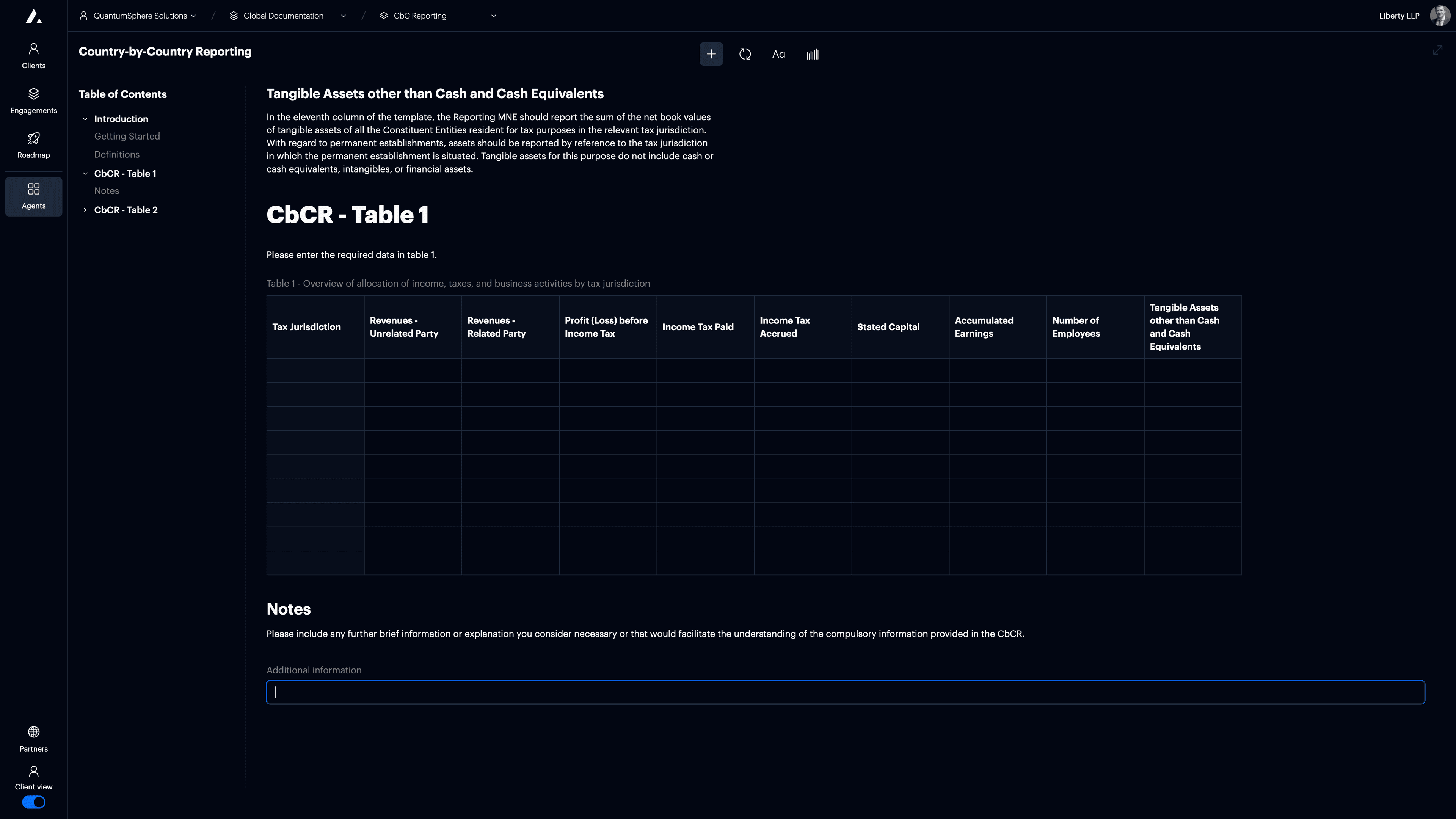
Figure 5: The Information Request interface – Alpha Version of t0
Analysis interface
Knowledge workers primarily conduct their analyses within the analysis interface, though data transformations, text generation, and visualizations can also be performed throughout other parts of t0. Central to this process is an advanced split-panel (split-screen) interface 1, designed to enable seamless interaction between users and AI.
The process begins with users selecting an AI model and, optionally, a context—such as previously saved client data or outputs from earlier analysis steps. Using natural language prompts, they describe the desired analysis, which the AI interprets and translates into code. This AI-driven workflow unlocks analytical capabilities that go beyond standard spreadsheet software, while also simplifying advanced features often underutilized, such as macros. For example, while business users rarely take full advantage of macros to automate sequences of actions, AI prompting makes creating such workflows significantly more intuitive and accessible.
The generated code can be further refined by users when needed for enhanced precision and control. While most operations do not require manual code adjustments, this feature becomes particularly valuable for building complex, long-term systems. In these cases, businesses can involve in-house IT teams or external consultants to customize the code, ensuring the desired outcomes when AI-generated results fall short.
t0 is built on widely used open-source technologies, including Python and leading data science libraries, which are recognized for their minimalistic syntax, adaptability, and compatibility with AI-generated workflows.
After prompting, users can execute the AI-generated code and view the results as text, data tables, or visualizations. These outputs can be saved and reused across other parts of t0, such as the report interface, promoting consistency and efficiency. Multiple analyses can be created and managed through a user-friendly navigation menu, with steps organized similarly to tabs in spreadsheet software, ensuring a structured and streamlined experience.
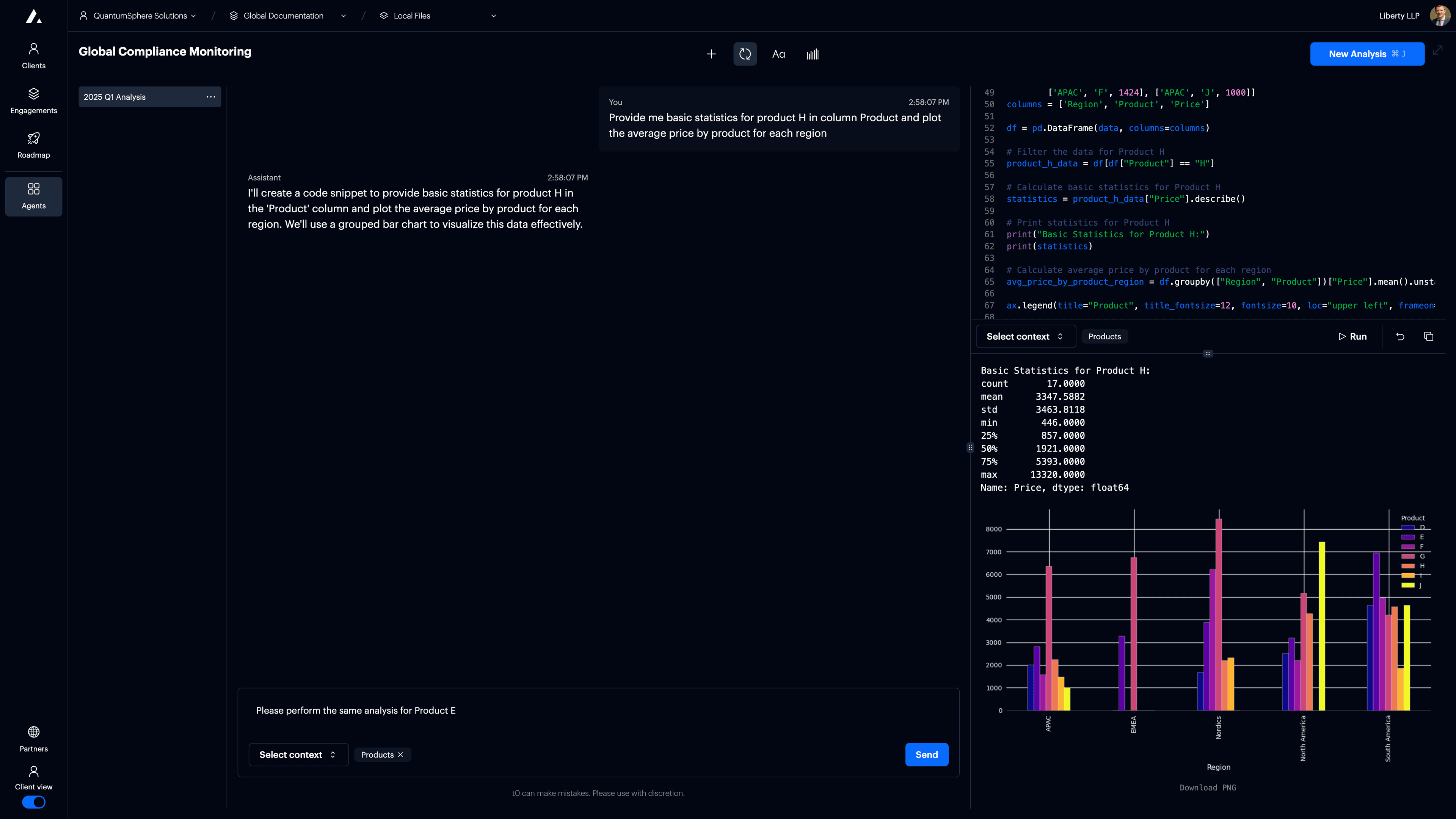
Figure 6: The Analysis interface – Alpha Version of t0
Report preparation interface
The report interface is purpose-built to streamline the creation of written deliverables, such as reports and memoranda, while maintaining efficiency and precision. With its split-screen design, users can edit content on one side and instantly preview the final result on the other, enabling a smooth and intuitive workflow.
The interface supports two distinct editing modes, designed to meet a wide range of user preferences and requirements:
WYSIWYG Editor: For users seeking a familiar, intuitive writing experience akin to standard word processing software, the WYSIWYG (What You See Is What You Get) editor provides a straightforward interface. This mode allows users to focus on writing and formatting without interacting with underlying code, making it ideal for rapid content creation.
LaTeX-Based Markup Editor: For users who require greater precision, advanced structure, or technical customization, the LaTeX editor offers unparalleled flexibility. LaTeX, a widely adopted system for professional document preparation, allows users to define the layout, formatting, and presentation of documents with code. This mode is particularly suited for producing highly tailored reports with complex formatting needs.
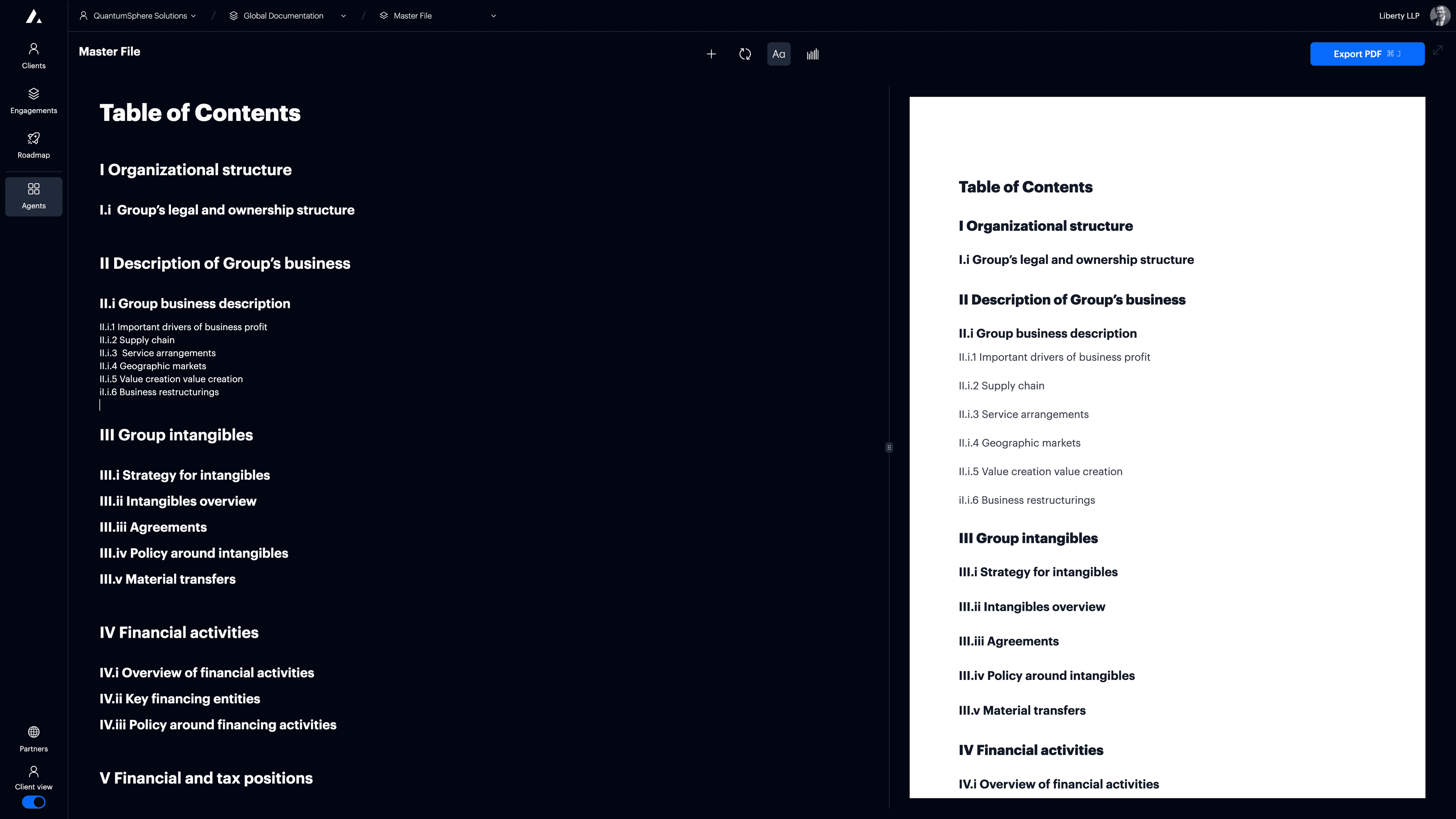
Figure 7: The Report interface – Alpha Version of t0
Intelligence dashboard interface
The intelligence dashboard interface is tailored to support the creation of dashboards for compliance, planning, and operational transfer pricing solutions. These dashboards provide valuable insights into a multinational’s compliance status and key metrics while offering the flexibility to configure advanced monitoring systems for its operational activities.
Out-of-the-box intelligence elements, such as maps, are readily available and can be linked to data tables generated in the analysis step. For more advanced needs, users have full control over creating a wide variety of data visualizations—static, interactive, or animated—with the assistance of AI. Leveraging popular data visualization libraries, the AI generates visualizations tailored to the user’s specific requirements. Additionally, data from the analysis step can seamlessly integrate into the dashboard, ensuring consistency and accuracy.
Dashboards are structured using a configurable tile system, allowing users to arrange visualizations and data elements flexibly. Visualizations, such as plots and tables, can be saved as reusable components for future use. A library of predefined visualizations and tables is also available, offering knowledge workers access to essential elements commonly required in day-to-day transfer pricing workflows.
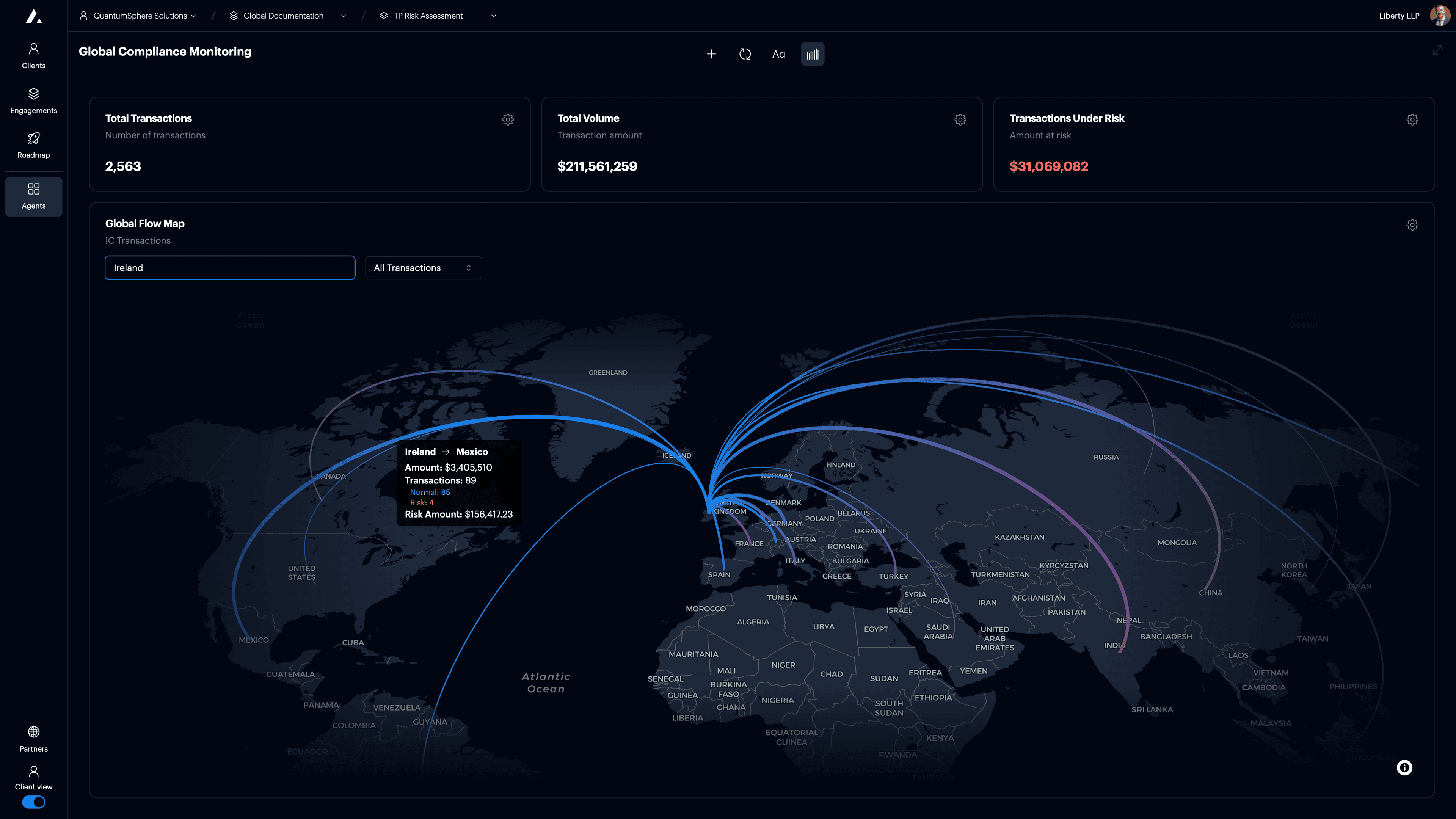
Figure 8: The Intelligence interface – Alpha Version of t0
Workflow orchestration with AI
When building or refining an agent, knowledge workers should experience a seamless progression through the various interfaces—intuitively leveraging AI at each stage. From preparing the information request to conducting the analysis, drafting the report, and, where applicable, configuring the intelligence dashboard, the workflow is designed for efficiency and clarity. This end-to-end orchestration ensures a smooth, logical process for knowledge workers, while maintaining a user-friendly experience.
For clients or reviewers, interacting with an agent should feel even more effortless. Through intuitive actions like navigating tabs, entering information, and selecting options from dropdown menus, end-users can engage with the solution without being burdened by its underlying technical complexity.
While both knowledge workers and end-users benefit from a streamlined experience, knowledge workers designing agents gain additional value from understanding the conceptual mechanics of agent functionality. This foundational insight empowers them to effectively customize and optimize solutions to meet specific requirements.
Agents operate within an environment, interact with tools, and perform actions based on predefined or adaptive workflows. The environment for an agent includes various data sources and contexts it can interact with, such as information provided in the information request stage, data retrieved from internal systems of record (e.g., financial systems, tax compliance platforms, enterprise resource planning (ERP) systems, or human resource (HR) systems), external third-party databases, or even knowledge sourced from the web. These environments define the boundaries within which an agent functions and accesses the data necessary for performing tasks.
Agents are equipped with tools that enable them to process and transform the data within these environments. These tools include chat interfaces for conversational interactions, Python compilers for data manipulation and computational tasks, LaTeX compilers for professional-grade document formatting, and visualization libraries for generating charts and dashboards. The flexibility and availability of these tools allow agents to execute a wide range of domain-specific workflows, making them versatile across various steps of the process.
Modern agents often consist of multiple generative AI models, forming what can be described as multi-model agents. Each model has specific roles, access, and expertise tailored to its function. For example, one model might specialize in natural language generation to draft narratives for reports, another in numerical computation for financial analysis, and another in creating data visualizations. These models may be configured to access only certain parts of the environment or to utilize specific tools, ensuring modularity and precision in their outputs.
Additionally, agents operate in a feedback-driven loop, where results are validated and refined iteratively. By incorporating features such as memory and context-awareness, agents can “remember” prior inputs and outputs within a session, enhancing their ability to produce cohesive results across different steps. For instance, an agent preparing a report might pull from the intelligence dashboard and analysis steps without needing redundant prompts or manual data transfers, creating a fluid and efficient workflow.
This architecture makes t0’s agent framework not only powerful but also adaptable. By abstracting much of the technical complexity, t0 empowers knowledge workers to focus on creative problem-solving and high-value tasks, while still providing the flexibility to dive deeper into technical customization when required. This balance between simplicity for end-users and depth for knowledge workers is a cornerstone of effective agent orchestration.
Figure 9: Agent Model Orchestration
Building on the flexibility of t0’s agent framework, knowledge workers have the ability to instruct AI with varying degrees of freedom when designing workflows, calculation logic, output structures, and more. Just as one might instruct a colleague to perform a task with specific or broad guidelines, users can determine how much autonomy a model has in solving a particular task. This approach allows for tailored solutions that balance precision, adaptability, and creativity.
The degrees of freedom can be classified into three categories:
- Programmatic - In this mode, the user communicates with the AI in natural language to describe a specific data or text transformation required, such as: “Sum up the values in column X where the category is labeled as ‘intercompany.’” The AI then identifies the appropriate solution and generates the code to execute it. Once the user confirms the correctness of the results, the generated code can be “locked in” for future use whenever the same task needs to be performed. Advantages: This approach ensures consistent and reliable execution, as the locked-in code will work seamlessly as long as the input data and structure remain unchanged. Disadvantages: If the input data or structure changes, the locked-in code may need to be adjusted to accommodate the new context. However, the user retains the flexibility to modify the prompt or refine the code as needed.
- Deterministic - Here, the user provides a structured natural language prompt with clear, predictable instructions, such as: “Sum up the amount column of every row that could be interpreted as an intercompany expense, such as ‘IC,’ ‘intercompany,’ or ‘intracompany.’” Instead of locking in the generated code, the user saves the prompt itself for repeated execution in future tasks. Advantages: This method offers a balance of adaptability and ease, as the AI can handle some variations in the data while automating repetitive tasks. Disadvantages: While more flexible than programmatic instructions, the prompt may still require occasional refinement if data variations exceed the AI’s interpretation.
- Probabilistic - In this mode, the user provides an open-ended natural language prompt, such as: “Compute different profit level indicators with data provided in table X.” The AI generates results by exploring various possibilities and applying its trained capabilities. Once the results are verified, the user can save the prompt for future use. Advantages: This approach allows the AI to generate creative or unexpected solutions that the user might not have considered, or to deliver results that would otherwise require significant effort and expertise. Disadvantages: The less deterministic nature of this method introduces a higher risk of inaccuracies or errors, requiring more careful validation and review by the user.
The degree of freedom selected for each task depends on the variability of the underlying data and the complexity of the task. Programmatic instructions are ideal for stable datasets and straightforward operations. Deterministic prompts provide adaptability for moderately variable data, while probabilistic prompts are best suited for tasks requiring exploration or creative problem-solving.
AI specifications
Supernomial leverages a combination of openly available, open-source, and proprietary AI models to power t0. Our approach prioritizes adaptability, scalability, and efficiency, ensuring that the AI models are optimized for a wide variety of transfer pricing tasks. When working with openly available, open-weighted, or open-source AI models, we carefully optimize several critical factors, including parameter size, training data, server capacity, meta-instructions, context retention, prompt-response alignment, and token efficiency.
The table below outlines the key AI specifications that power t0.
| Specification | |
|---|---|
| Deployment infrastructure | Hugging Face Inference (AWS) |
| Model architecture | Transformer-based |
| Model types | Openly available, open-source, and proprietary models |
| Parameter size | Varies based on model type |
| Inference hardware | GPU and CPU |
| Inference framework | Hugging Face Transformers, NVIDIA TensorRT, others |
| Fine-tuning | Parameter-Efficient Fine-Tuning |
| Training sets | Datasets with 1,000 to 10,000 data points |
| Interaction types | Single-turn and multi-turn conversations with few-shot prompting |
Table 1: AI Specifications
We recognize that different tasks present unique requirements, necessitating thoughtful trade-offs between cost, latency, and response quality. For example:
Cost vs. quality: High-parameter models may deliver better accuracy for complex analyses but at a higher computational and financial cost.
Latency vs. context: For low-latency applications, smaller models optimized for specific use cases may be preferred over larger models that retain greater context.
Generalization vs. specialization: While some tasks benefit from generalized models with broader training data, others require fine-tuned models for domain-specific outputs.
How t0 provides ownership
Ownership is a cornerstone of t0’s mission, ensuring that knowledge workers maintain full control over their solutions, outputs, and intellectual property. From safeguarding proprietary knowledge to deciding how solutions are shared, deployed, and monetized, t0 is purpose-built to prioritize user autonomy. All users operate within the framework of t0’s Terms of Service agreement, supported by a flexible usage-based pricing model designed to align with the diverse needs of organizations. This structure not only provides clarity and transparency but also reinforces t0’s commitment to putting knowledge workers in charge of their expertise and outputs.
Protection of knowledge
As knowledge workers build solutions on t0—whether creating entirely new ones or customizing pre-built options—their work output remains private by default and inaccessible to third parties. Once a solution is completed and ready for use, organizations can choose one of three paths for deployment:
In-house use only (case 1): The solution remains internal, with no access granted to third parties.
In-house use with third-party access (case 2): Access is selectively extended to external users.
Marketplace availability (case 3): The solution is made discoverable and usable by third parties via t0’s marketplace. 2
For professional services firms opting for in-house use only (case 1), deliverables such as reports or intelligence dashboard snapshots can be shared externally in formats like PDF, ensuring that proprietary knowledge remains securely within the organization. Similarly, for multinationals building solutions in-house, sensitive logic, processes, and expertise are fully retained within the organization. In cases where third-party access is granted (cases 2 and 3), organizations maintain granular control over what is shared. They can determine the extent to which the underlying logic, workflows, and code are visible or accessible to end users. This allows firms to strike a balance between collaboration and safeguarding proprietary knowledge. To further ensure data portability and ownership, knowledge workers who decide to leave the t0 ecosystem can export all their content, logic, and code when deleting their account.
As emphasized throughout this whitepaper, transfer pricing knowledge work is inherently reliant on the expertise and case-specific judgment of seasoned professionals. While t0 provides powerful tools to enhance efficiency and enable deep customization, the value of a transfer pricing engagement lies in the knowledge worker’s ability to apply domain expertise to complex, nuanced scenarios.
Without subject matter expertise, even the most sophisticated solution may not yield optimal results. Robust compliance outcomes require an expert’s ability to leverage t0 as an enabler rather than a replacement for their judgment. Although simpler workflows may benefit less experienced users, most multinationals face complex and interwoven structures that demand a holistic approach to minimize transfer pricing risks. As such, the best outcomes are achieved through advisors or technically strong in-house teams using t0 to amplify their expertise.
Usage terms
Knowledge workers have full control over how the solutions they build on t0 are used. They decide which specific problems their solution addresses, who has access to it, how it is utilized, and the types of engagements it supports. This flexibility ensures that users can align their solutions with the unique demands of their clients, projects, or internal objectives. Unlike conventional business-to-business software, which often enforces restrictive usage terms that dictate how products can be deployed, shared, or distributed, t0 empowers users with ownership over their work output.
This ownership extends to critical elements such as determining the level of transparency provided to third parties. For example, users can choose whether to expose parts of the solution’s underlying logic or code when granting access to collaborators or clients. By putting this decision entirely in the hands of the knowledge worker, t0 safeguards proprietary knowledge while still allowing for meaningful collaboration.
Additionally, t0’s usage model avoids practices that limit operational flexibility, such as restrictive licensing tied to engagement types or the number of users. This is particularly important for professional services firms that need the freedom to adapt solutions across diverse client projects without being constrained by commercial terms dictated by software vendors.
This flexible and user-centric approach to usage terms not only fosters a sense of ownership but also aligns with t0’s broader mission of enabling knowledge workers to deliver tailored, high-quality solutions that meet the complexities of modern transfer pricing work. By offering such autonomy, t0 addresses a key barrier to ownership often found in traditional software solutions, ensuring that knowledge workers retain control over how their expertise and tools are shared and applied.
Commercial terms
Knowledge workers have full control over pricing the services they deliver on t0, ensuring flexibility to meet the needs of diverse clients and engagements. Unlike traditional software vendors with rigid value-pricing strategies, t0’s approach prioritizes affordability, allowing more budget to be allocated toward expertise and advisory work.
t0 also supports various business models, from standalone solutions to subscription-based services, enabling consultancies to scale offerings without commercial restrictions. Additionally, users can monetize their solutions on t0’s marketplace while maintaining full control over how much of their proprietary logic, code, or workflows are shared. By offering user-centric and adaptable commercial terms, t0 eliminates barriers found in traditional software, fostering greater autonomy and value for knowledge workers.
Competitive landscape
When considering the average budget constraints of in-house teams for transfer pricing technology, the current market for software can be divided into specific vendor categories, as illustrated in the figure below.
There are numerous solutions from technology vendors offering standardized software with limited or no customization options. These are primarily targeted at multinationals that possess sufficient internal expertise and have straightforward reporting needs, where standardized software is adequate—represented in quadrant (iii). Similarly, large consulting firms provide standardized software bundled with additional advisory services, catering to multinationals that lack internal expertise and seek external guidance for straightforward reporting needs—quadrant (ii).
At the opposite end, some technology vendors focus on building highly individualized, client-specific solutions. These solutions, while offering significant customization, are often cost-prohibitive and designed for multinationals with complex needs and the expertise to manage such solutions—quadrant (iv). However, the segment of the market that seeks both expertise and highly customizable software remains underserved. Current offerings in quadrant (i) are limited to niche players providing specialized solutions that address only specific aspects of transfer pricing analysis. Comprehensive, holistic solutions for multinationals demanding expert advice bundled with customizable software across a wide range of use cases are noticeably absent.
The majority of multinationals fall into quadrant (i), where demand for customizable software combined with advisory expertise is high but unmet. Meanwhile, the long tail of multinationals—those with simpler needs—are sufficiently served by existing offerings in quadrants (ii) through (iv).
We see a significant opportunity in quadrant (i): to provide holistic solutions that cater to the growing demand for expert-driven, customizable software, enabling in-house teams and professional services firms to address complex transfer pricing challenges collaboratively.
Figure 10: The Software Landscape
Footnotes
-
The split-panel interface is currently the most commonly adopted UI approach among leading AI-native applications. However, the field is evolving, and the optimal design for interacting with AI has yet to be definitively established. At Supernomial, we remain curious and open to exploring new directions as industry trends continue to develop, experimenting with our own approaches to deliver the best possible experience. ↩
-
t0’s marketplace is currently in development. Once a solution is deployed and used, all underlying data entered by end users remains private and is not accessible to the original creator or other third parties. ↩
 Resources
Resources